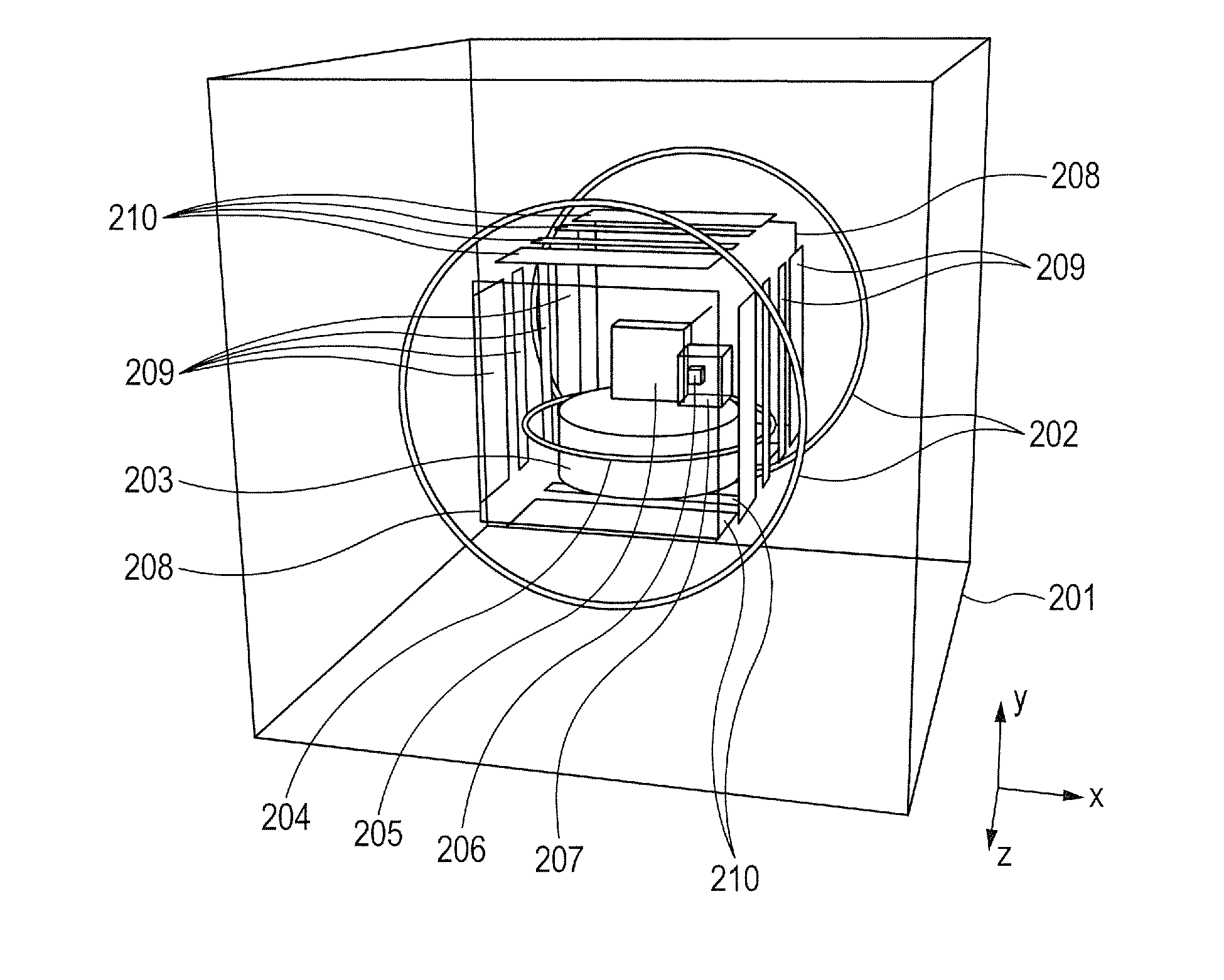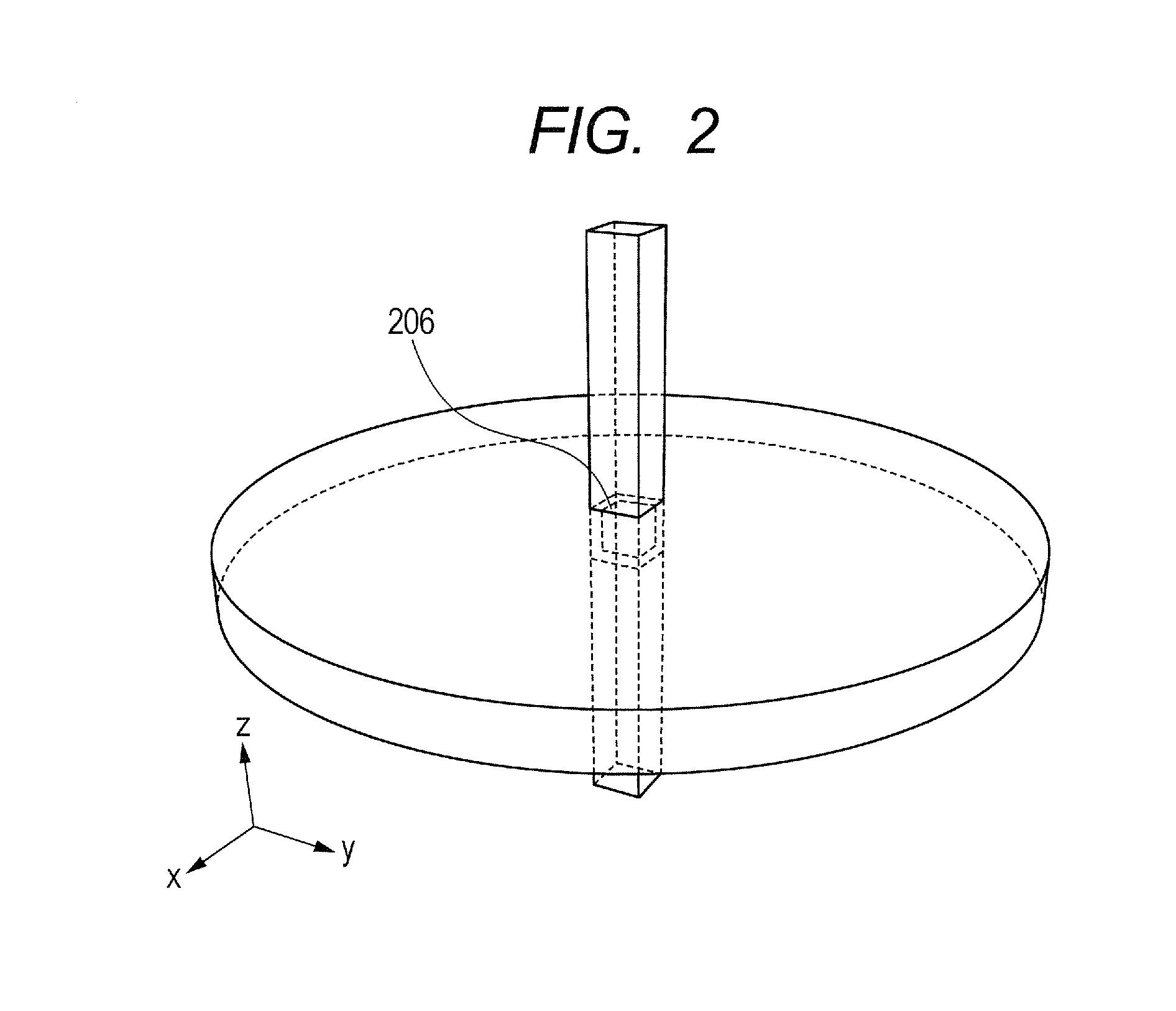Nuclear magnetic resonance imaging apparatus and nuclear magnetic resonance imaging method
- Summary
- Abstract
- Description
- Claims
- Application Information
AI Technical Summary
Benefits of technology
Problems solved by technology
Method used
Image
Examples
example 1
[0046]As Example 1, an exemplary configuration of a nuclear magnetic resonance imaging apparatus to which the present invention is applied will be described with reference to FIG. 4. As illustrated in FIG. 4, the nuclear magnetic resonance imaging apparatus in this Example is surrounded by three pairs of coils 201 directed in three axis directions to cancel earth's magnetic field. Further, the nuclear magnetic resonance imaging apparatus includes a pair of Helmholtz coils 202 for applying a magnetostatic field to a sample. The pair of coils 202 apply a magnetostatic field B0 having intensity of, for example, about 50 μT to 200 μT. A polarization coil 203 generates a magnetic field in a direction perpendicular to the magnetostatic field B0 to cause spin polarization of the sample. The polarization coil 203 applies a magnetic field of, for example, 40 mT to 100 mT. An RF coil 204 applies a 180° pulse or a 90° pulse to the sample to control a direction of the spin of the sample. The en...
example 2
[0067]As Example 2, an exemplary configuration with a shape of a region to be imaged different from that in Example 1 will be described with reference to FIG. 8A and FIG. 8B showing a side view thereof.
[0068]In Example 1, for a region to be imaged, a sectional shape of a region in the z direction is a thin plate-like shape, and a sectional shape in an in-plane direction perpendicular to the z direction is a square shape with a size larger than a thickness of the thin plate on a side.
[0069]On the other hand, in this Example, for a region to be imaged, a sectional shape in the in-plane direction perpendicular to the z direction is a thin plate-like shape, and a sectional shape of a region in the z direction is a square shape with a size larger than a thickness of the thin plate on a side. Specifically, as shown in FIG. 8A, the region is a thin plate-like region in the y direction.
[0070]Also in this case, there is the same restriction as described in the embodiment. Specifically, when ...
example 3
[0072]In Example 3, an exemplary possible arrangement of sensors when it is found that a sample in a space to be imaged does not completely fill the space to be imaged and there is a region only with air in an image will be described with reference to FIG. 9A and FIG. 9B showing a side view thereof.
[0073]For example, when the region to be imaged includes an elliptic cylindrical sample region in the region to be imaged, specifically, when a space to be imaged 205 includes an elliptic cylindrical sample, the sensors are arranged as in FIG. 9A. Specifically, the sensor module 207 is arranged along a side surface of the elliptic cylinder, and thus if the cell enter the space to be imaged, the cell does not become an obstacle in practice. As shown in FIG. 9A, the cell 206 is arranged so as not to intersect the sample within a plane (x-y plane in FIG. 9B) perpendicular to the magnetostatic field, thereby allowing configuration of an image. The alkali metal cell 206 is arranged so that coo...
PUM
 Login to View More
Login to View More Abstract
Description
Claims
Application Information
 Login to View More
Login to View More - R&D
- Intellectual Property
- Life Sciences
- Materials
- Tech Scout
- Unparalleled Data Quality
- Higher Quality Content
- 60% Fewer Hallucinations
Browse by: Latest US Patents, China's latest patents, Technical Efficacy Thesaurus, Application Domain, Technology Topic, Popular Technical Reports.
© 2025 PatSnap. All rights reserved.Legal|Privacy policy|Modern Slavery Act Transparency Statement|Sitemap|About US| Contact US: help@patsnap.com



